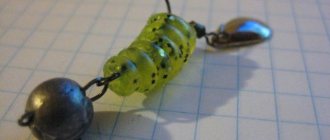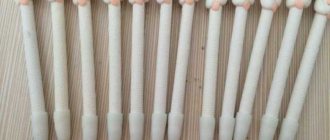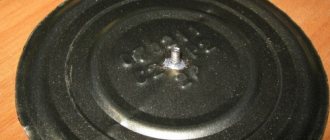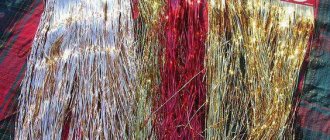For every novice boxer, such equipment as a punching bag is important. It is needed for practicing strikes, combinations and the like. A punching bag is an imaginary opponent. But, the equipment is needed not only by beginners, but also by those who have been boxing for a long time. In sports stores, there is a fairly large assortment of pears. But the problem is that the price is high, and therefore not everyone will afford to purchase this projectile. Then most athletes wonder how to make a punching bag at home? But in order to start making a boxing bag, we choose the materials that you will use during production.
Pear sizes
What is a pear made of?
The pear is made of two parts: a filler and a container into which this filler is poured. The bag acts as a container (see photo).
To make a bag use:
- very dense fabric;
- tarpaulin;
- artificial or natural leather.
Several materials act as filler:
- fine crushed stone;
- sand;
- sawdust.
Choosing between sawdust and crumbs
Today, a dilemma often arises among those who want to practice boxing equipment at home. What is the best filling for a punching bag? Limit yourself to cheap options or splurge on expensive ones. Or what combination of materials is most optimal.
There are two polar options: sawdust and crumb rubber. The first one is very cheap. The second one is very expensive. If the issue of money is not important, then it is worth considering other nuances, namely the strengths and weaknesses of these options.
Sawdust. Strengths:
- Cheapness.
- Availability.
- Easy to stuff.
Weaknesses:
- Seepage through seams.
- They are a source of large volumes of dust.
- Significant shrinkage.
- Creating optimal conditions for harmful organisms.
- Rotting due to inadequate drying.
- Modest mass.
- Lack of elasticity. After impacts, dents remain on the projectile.
Item 6 can be a plus when you don’t know what to fill a bag for children with. Such a lightweight projectile is optimal for small boxers. After all, they are just developing their muscles and basic technique.
Crumb rubber for a punching bag has the following advantages:
- Doesn't get dusty.
- Almost doesn't shrink.
- Ideal for punching: not very soft and not very hard.
Its main disadvantage lies in its high cost.
If you are planning mainly homework, then sawdust is a completely unsuitable option. They will soon start to come out through the seams. It is better to place bags with them outside or in a utility room.
And for home training, it is better to use products with crumbs.
How to make pear at home?
Now that you have decided on the material, you can begin the preparatory work. You will need three bags and appropriate fillers. The bags are sewn from the fabric that was chosen for the pear. The most preferable is leather, since dense fabric will soon begin to lose sand, and the tarpaulin itself is very hard - it will be impossible to approach it without gloves. And exercises for the legs will simply be impossible, since the legs will get tired quickly.
Each bag should be 1-2 cm larger than the previous one. It is not recommended to sew a pear from a bag used for sugar or flour, because... they most likely will not withstand even three training sessions and will break through.
The seams are made with nylon thread, each row is stitched three times. Glue is applied over the thread seam, which is used to fasten the rubber surfaces. Some people make a pear simply from sand, and as a short-term option it is quite acceptable.
Take the smallest bag and fill it with crushed stone. Then it is inserted into a larger bag. The distance between the outer side of one and the inner surface of the other is filled with sand. After this, the third bag is pulled, and the layer between the surfaces must be filled with sawdust. It should also be taken into account that after the first training, the third layer will settle a little, and it will be necessary to supplement it with sawdust, so the filling paths should open easily.
Necessary materials
Filling your old bag with anything and practicing punches on it is a bad idea. This design will not last even a couple of days. To create a really high-quality punching bag with your own hands, you need to carefully study the possible options for filling, upholstery and fastenings, and only then get down to business.
Filler
There are many materials that can be used as the inside of a punching bag. Each of them should be considered separately:
- Sand and sawdust are not recommended fillers when creating a punching bag. Although the first material will give the projectile hardness, it will inevitably fall out over time, regardless of the upholstery. The sawdust pear will quickly lose its shape and become quite soft.
- Scraps of fabric or leather would be a better choice. A boxing bag made from such filler will keep its shape and elasticity for a long time, but its creation will require a large amount of material and its dense compaction. In addition, such a bag will not be too hard, which will reduce the likelihood of injuries in novice athletes. For professionals, the choice should be towards a harder filler.
- Crumb rubber can become one of these. Unlike previous competitors, this material does not crumble and retains impact resistance for a long time. It is worth noting that such a projectile can cause bruises and dislocations, but if used correctly, it will make the blow heavy and dense.
- One of the easiest ways to make a punching bag is to use car tires. To do this, 4 holes are made in the tires with an equal distance from each other. Next, the tires are placed one on top of the other, and a thick rope or rope is threaded through them.
Exterior upholstery
The choice of upholstery should be treated with special care. It must withstand a boxer's blow and maintain the shape and density of the filler. Making it from multi-layer fabric will not be enough - such a structure will quickly tear. Therefore, let's consider more suitable materials:
- The most popular type of upholstery is leather or leatherette. Such material will not damage the fist upon impact and will be strong enough to maintain the shape of the filler.
- Tarpaulin is a harder material, so hitting it without gloves is not recommended. It must be folded in several layers, otherwise it may burst.
Fastenings
To attach the punching bag, you will need leftover upholstery, for example, scraps of leather and a chain, strong rope or other climbing equipment.
Fasteners for punching bag
There are several options to create a reliable fastener for the pear:
- use eyelets and carabiners used by climbers; you will have to tinker with inserting the eyelets a lot, although in the end the pear will turn out to be quite decent;
- cut a circle out of thick plywood, drill holes in it for the rope, stretch the rope, securing it with knots on the back side; the circle will have to be covered with leather and firmly sewn into the pear.
There are no difficulties in how to make a pear at home. Except for the hard work with the fabric, which is very dense. It will be possible to work with it only with the help of special tools.
The dimensions of such a homemade pear can vary, and with high-quality processing of the fabric, you can make these for friends or even the gym. The very first training sessions will help you evaluate your work not only visually, but also through direct contact.
Progress
Once you have selected all the materials that suit you, you need to get to work. Remember that if you work with equipment with gloves that have little protection, you should choose a soft filler to avoid injury. But, you should understand that you will not get that cylindrical shape that we are so used to seeing in gyms or sports stores; you will rather get a bag, and the size can be adjusted independently.
Product assembly
- Make a pattern, but remember that you need to take your time making the pear. Measure and cut to the desired length you will need. It is recommended to use nylon threads. It is advisable to sew something similar to a bag, if you have chosen fabric, then “Attention, do not forget that it is advisable to roll the fabric in two layers or even more”
- For the next stage, the “filling” must be ready. Pour the filler you have chosen into the bag; if it is rags, make the layers dense. If it is sand, then in the first days of training, it may settle and you will have to fill it up. Next, fill the shell, you can proceed to the next step.
In order to secure a homemade punching bag, you should sew a steel ring into the bag, prepare a chain and secure it around this circle. Gather the ends of the chain into a pyramid and hang it on the horizontal bar. You can also make a special stand for a punching bag. There are also other ways to attach the bag.
But everything has its downsides. For example, in order to fill a punching bag with rubber shavings, you will have to make an effort, since they are very difficult to find in stores. The seams may not be strong enough, and the pear will probably tear. Also, homemade fastenings can be unstable and break off at any time.
How to work with a boxing bag correctly?
The main thing to remember is to have a warm-up before training. All muscles must be ready to “meet” the punching bag. The sports equipment is very heavy, and training with it is not easy, so you should prepare thoroughly.
Attention! You cannot train with such equipment on your own without experience. This is dangerous to your health. Be sure to perform all exercises in the presence of a trainer, according to his clear instructions, especially during the first training sessions!
When working with a punching bag, you need to monitor the position of your hands and fists. You need to clench your fist almost at the last moment, almost in full contact with the bag. It is important!
After contact with the bag, the hand should not be delayed; it should be immediately returned to its original position. The blow must be struck very quickly. Practicing with a large punching bag requires some skill; it is important to move your legs and arms quickly. It is best to train in a free style so that you can practice a variety of movements. Working with a heavy bag is very tiring, so after fatigue sets in, you should either stop training or pay attention to protective techniques, which are also very important.
Rubber crumb
A well-proven filler is crumb rubber of a fraction of 3-6 mm. Its optimal density and high damping properties make it possible to achieve optimal characteristics for a sports equipment: weight, size, elasticity. A finer fraction makes the sports product denser.
A punching bag filled with high-quality rubber crumbs holds its shape well, does not generate dust, is less demanding on external conditions, and does not change its properties. In addition, crumb rubber does not rot. However, it should be remembered that athletes begin to use such professional equipment only after a year of training.
To achieve the necessary springiness at the moment of contact, special inserts are made in the bag that dampen the impulse, making the impact on the dense mass of crumbs safer. Over time, the crumbs can cake, so when stuffing, it is also recommended to put them in 3-5 kg bags. It is convenient to regulate the weight of the bag, and the density of the granulated rubber filler will be more uniform, which makes training a series of blows effective. Crumb rubber is difficult to find on the construction market. But it can be bought from seamless coating manufacturers .
Home gym
For regular training at home, you need your own mini-gym. It is easy to equip. First of all, you need to choose the right flooring. It should be non-slip and have good sound insulation. For these purposes, sports rubber tiles are best suited. It is often used in professional sports complexes. The tiles have special Dovetail hooks and are easy to lay yourself. If necessary, the modular flooring can also be easily disassembled.
Sports tiles are selected based on thickness. Of course, the thicker the tile, the more expensive it is. But it is the thickness of the tile that determines its soundproofing properties. In addition, thick tiles provide better safety from falls. The tile has good tactile properties. It is practical to use. The color scheme of the rubber coating is selected to match the design of the room.
See also:
Repair of crumb rubber coating. We do it ourselves Making a rubber coating with your own hands GOST standards for coatings made of crumb rubber Polyurethane adhesive for crumb rubber Safety coating. Question - answer Advantages of rubber tile coating Rubber tiles or seamless coating? How to check the quality? Winter and summer in one color or reliable dyes for rubber tiles Hot or cold pressing of rubber tiles. Objective reality
Types of bags by purpose
There are two types: 1. For complex strikes. The bags are created with a stable fastening system so that the fighter can try different techniques during sports. This is sports equipment for professional boxers. Very heavy, its weight can reach 100 kg. Such a boxing bag is most often placed in the gym, because it is simply impossible to place it at home. It takes up a lot of space, and during training you need a lot of free space. 2. For punches. Universal equipment, can be placed not only in the gym, fitness, sports hall, but also at home. The bag is not heavy.
Which filler is best for a punching bag - selection criteria
There are a number of requirements that a punching bag must meet. If you are a beginner, be sure to review the following criteria:
- moderate softness-hardness (for beginners it is better to choose an option that is not too hard);
- the ability to restore shape after being struck;
- medium severity (if the weight is too heavy or light, training is uncomfortable);
- good shock absorption, so that arms or legs will bounce off sports equipment (this prevents injury);
- maintaining the density of the bag after the blow so that the fist does not get stuck in the pear;
- resistance to increased loads - even if you are a beginner, the impact force increases over time, so the tool must withstand any impact.
The cost deserves special attention - professionals choose expensive models, since they train on an ongoing basis. Beginners are advised to purchase mid- and low-cost options, at least until they realize how important the sport of boxing is in their lives.
There is an optimal option for combined fillers - rags with sand and sawdust. In this case, the core is filled with sand (like a rod), and the rest of the space is filled with sawdust and rags.
Distinctive features of fillers
Leather is considered one of the best fillers; it has optimal weight and shock-absorbing properties, sufficient softness and resistance to wrinkles. Since the leather is quite tough, it is often supplemented with (rags) cotton or synthetic fabric or scraps of insulation for clothing. Even without skin, these materials are able to retain volume and retain their properties for years, even with the most intense workouts.
Crumb rubber combines all the advantages of leather and rags and the optimal mass; if the pear seems too light, its mass is “finished off” with sand. Used tires can be a home replacement, but they need to be finely crushed to a size of 1-1.5 mm. Polyethylene granules have the same properties, but they are more difficult to find on sale.
Filling with sand is the cheapest and most inconvenient option; small particles quickly clump together and the projectile turns into stone. Although, if necessary, this material is used together with others to increase mass. Tyrsa and sawdust have the same disadvantages as sand.
Expanded clay is used when a fairly solid filling is required. Thanks to its rigidity, sensitivity in the fists and other places is lost more quickly during training. Lightness, if necessary, is compensated by the addition of sand.
Filling the bag
Making an inner cylinder. To do this, pour sand, sawdust or rubber crumbs into a bag or a thick garbage bag, wrap it in several more bags and tie it tightly. The mass of bulk filler must be selected individually depending on the required weight of the projectile. Place the package at the bottom of the bag. If you don’t have any of the above at hand, skip this step and just lay down the rags.
Fill the top to the top with rags, tamping and pressing it as tightly as possible. For this, it is best to use a stick with a blunt end. It will take a lot of time to lay the bag, but if you do not compact it well, the attribute will soon sag and will not be dense enough, and the brush will get stuck. If the projectile turns out to be very heavy, you can adjust the amount of bulk filler.
What else can you fill a punching bag with?
When answering how to choose a punching bag, it is impossible to ignore the classic fillers, which are used less and less today. Their only advantage is cost savings for the manufacturer. The buyer will soon have to return to the store for a new bag, since the old one will quickly become unusable.
Sand
- short service life;
- hardens;
- traumatic;
- wakes up through the casing.
Sand is the most affordable material for stuffing a punching bag. After just a couple of months of use it loses its working shape. The bag hardens from moisture and becomes unsuitable for safe training. In addition, under the weight of the filler, the casing breaks and the sand spills out - and the projectile loses volume.
Sawdust
- dusty;
- hardens;
- shrinks quickly;
- rots.
Sawdust and tyrsa are often considered as an option for amateur training for teenagers and novice athletes, although in practice they do not live up to expectations. This type of filler will not last long. After 2-3 months of training, sawdust will accumulate at the bottom of the bag. As with rubber infill, shrinkage is a significant disadvantage of this infill. Also, sawdust strongly absorbs moisture, which causes fungus to develop, the bag to rot and an unpleasant odor to appear in the room.
Rags
- long service life - does not go astray;
- soft - you can work without gloves;
- large volume of the bag - you can work with your feet.
The textile filler consists of scraps of natural and synthetic fabrics. Synthetics add weight to the product, and natural components maintain the elasticity of the bag. The rags do not shrink, regardless of the duration and intensity of use. This filler does not harden and has optimal elasticity, making it possible to train on it without gloves.
Children's question
What is the best way to fill a punching bag for a child? You can use sawdust. They make a lightweight product. This is a good household option. You can purchase a suitable projectile.
You should not buy extension modifications. A novice fighter may not calculate the dynamics of the return and receive a painful attack in the face.
The most effective and safe option here is a children's inflatable bulb. It is lightweight and safe to use. It’s easy to bring her into a working position.
You can fill this baby bulb with air. And its volume will determine its return.
In addition, it is easy to adjust to the child’s anthropometric data.











